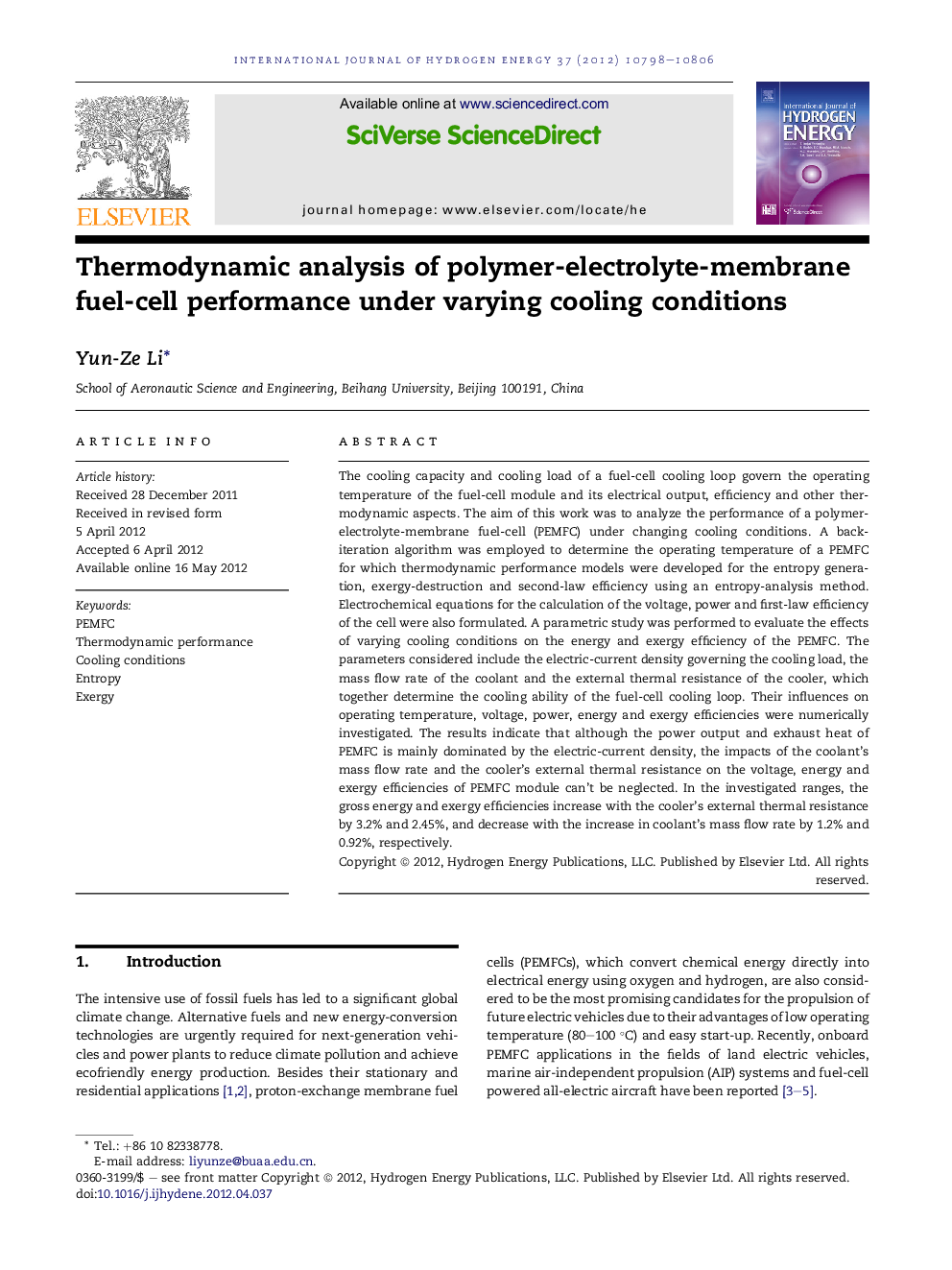| Article ID | Journal | Published Year | Pages | File Type |
|---|---|---|---|---|
| 1276363 | International Journal of Hydrogen Energy | 2012 | 9 Pages |
The cooling capacity and cooling load of a fuel-cell cooling loop govern the operating temperature of the fuel-cell module and its electrical output, efficiency and other thermodynamic aspects. The aim of this work was to analyze the performance of a polymer-electrolyte-membrane fuel-cell (PEMFC) under changing cooling conditions. A back-iteration algorithm was employed to determine the operating temperature of a PEMFC for which thermodynamic performance models were developed for the entropy generation, exergy-destruction and second-law efficiency using an entropy-analysis method. Electrochemical equations for the calculation of the voltage, power and first-law efficiency of the cell were also formulated. A parametric study was performed to evaluate the effects of varying cooling conditions on the energy and exergy efficiency of the PEMFC. The parameters considered include the electric-current density governing the cooling load, the mass flow rate of the coolant and the external thermal resistance of the cooler, which together determine the cooling ability of the fuel-cell cooling loop. Their influences on operating temperature, voltage, power, energy and exergy efficiencies were numerically investigated. The results indicate that although the power output and exhaust heat of PEMFC is mainly dominated by the electric-current density, the impacts of the coolant's mass flow rate and the cooler's external thermal resistance on the voltage, energy and exergy efficiencies of PEMFC module can't be neglected. In the investigated ranges, the gross energy and exergy efficiencies increase with the cooler's external thermal resistance by 3.2% and 2.45%, and decrease with the increase in coolant's mass flow rate by 1.2% and 0.92%, respectively.
► The impacts of cooling condition variations on PEM fuel cells are discussed. ► Both the first-law model and the second-law algorithm are provided in detail. ► The changes in energy and exergy efficiency are numerically investigated. ► The efficiencies are increasing with the cooler's external thermal resistance. ► The increase in current density and coolant flow rate leads to efficiency decreases.
